From Kutch to Your Closet: What Is Ajrakh and How iTokri Keeps It Alive
India’s culture is often glorified in textbooks and tourist brochures—filled with color, history, and tradition. But beyond the glitter, in the quiet desert region of Kutch, Gujrat, there’s a craft or for that matter ‘a pure work of art’ that speaks of this heritage in the most honest way. It’s called Ajrakh block printing.
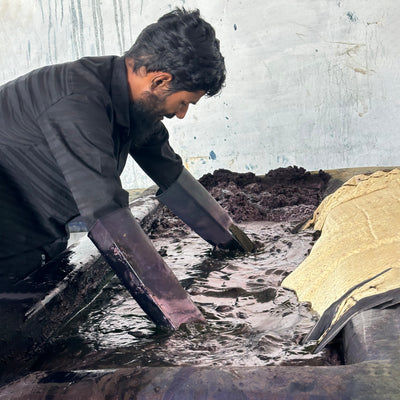
Modal Ajrakh is not made in big factories or by machines. It’s created with love and care by small families, where generations of artisans have worked together with the same wooden Ajrakh blocks, the same natural dyes, and the same love for the heritage.
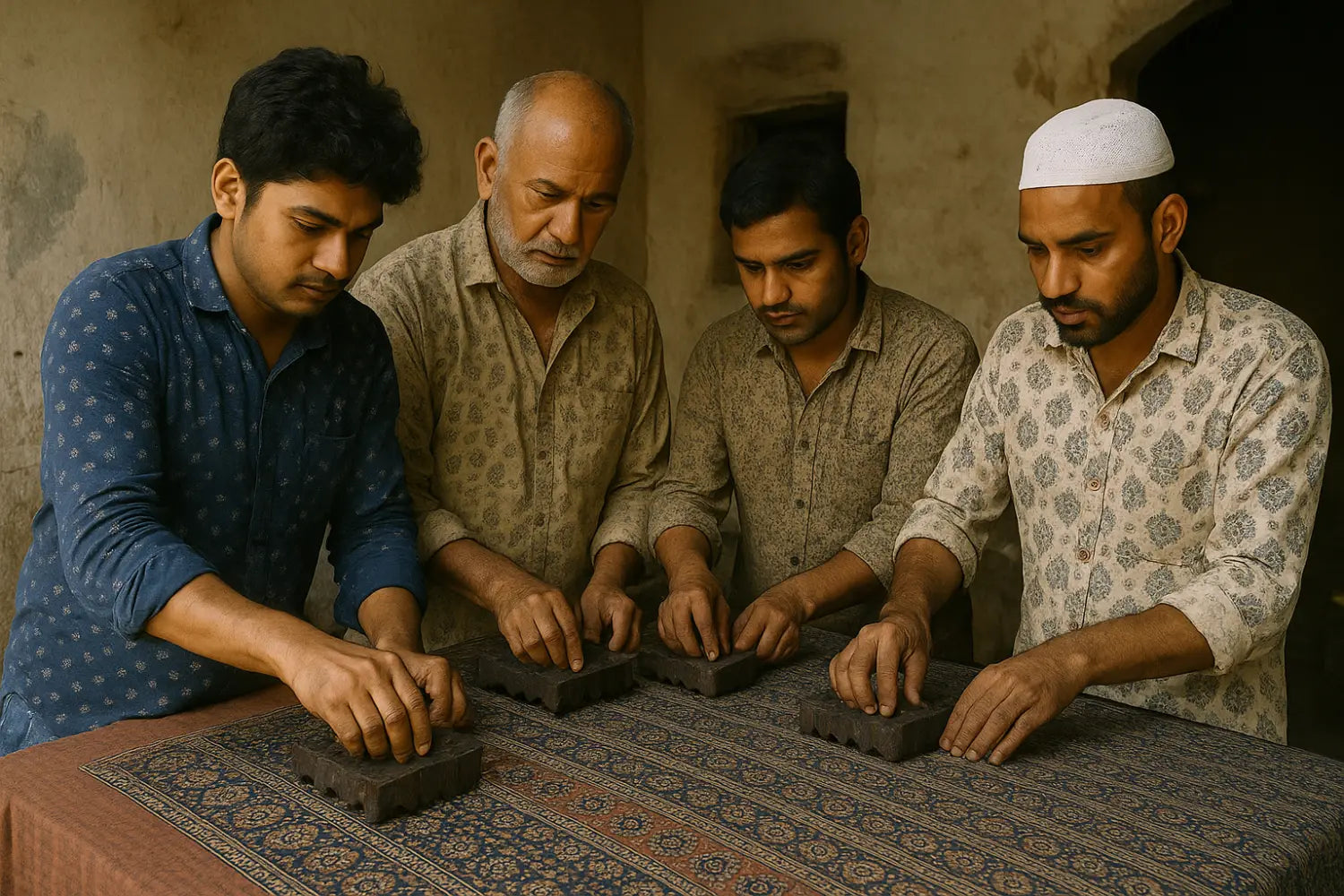
Each piece of Ajrakh motifs takes days, sometimes weeks, to complete. It’s a reminder that slow processes aren’t outdated—they’re intentional. Wondering how a centuries-old Ajrak art makes its way from remote villages to our homes? The thread that connects it all is – iTokri.
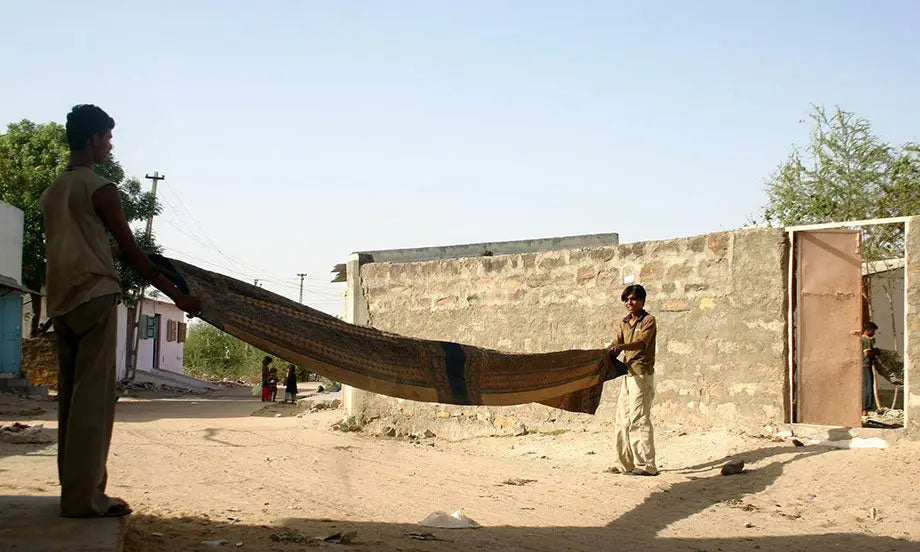
Image credit:- India Street
With deep ties to artisan communities, iTokri, an Indian handicrafts online store, brings Ajrakh craft from the courtyards of Kutch straight to your hearts. Come along as we reveal the authentic story of Ajrakh craft, just as it has always been meant to be shared.
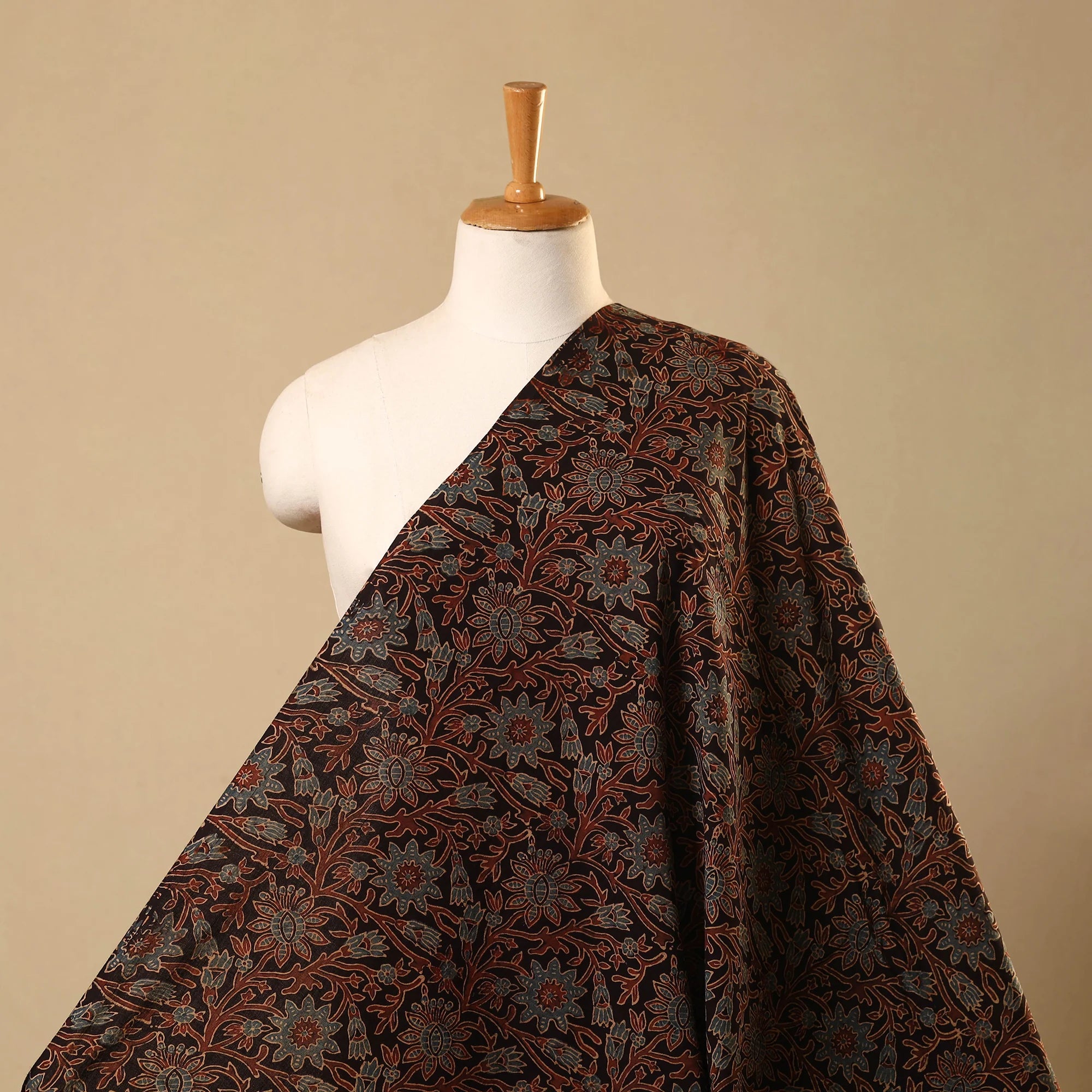
What Is Ajrakh? A Definition Rooted in Tradition
Ajrakh is a traditional craft that involves hand block printing and natural dyeing with colours like indigo and madder.
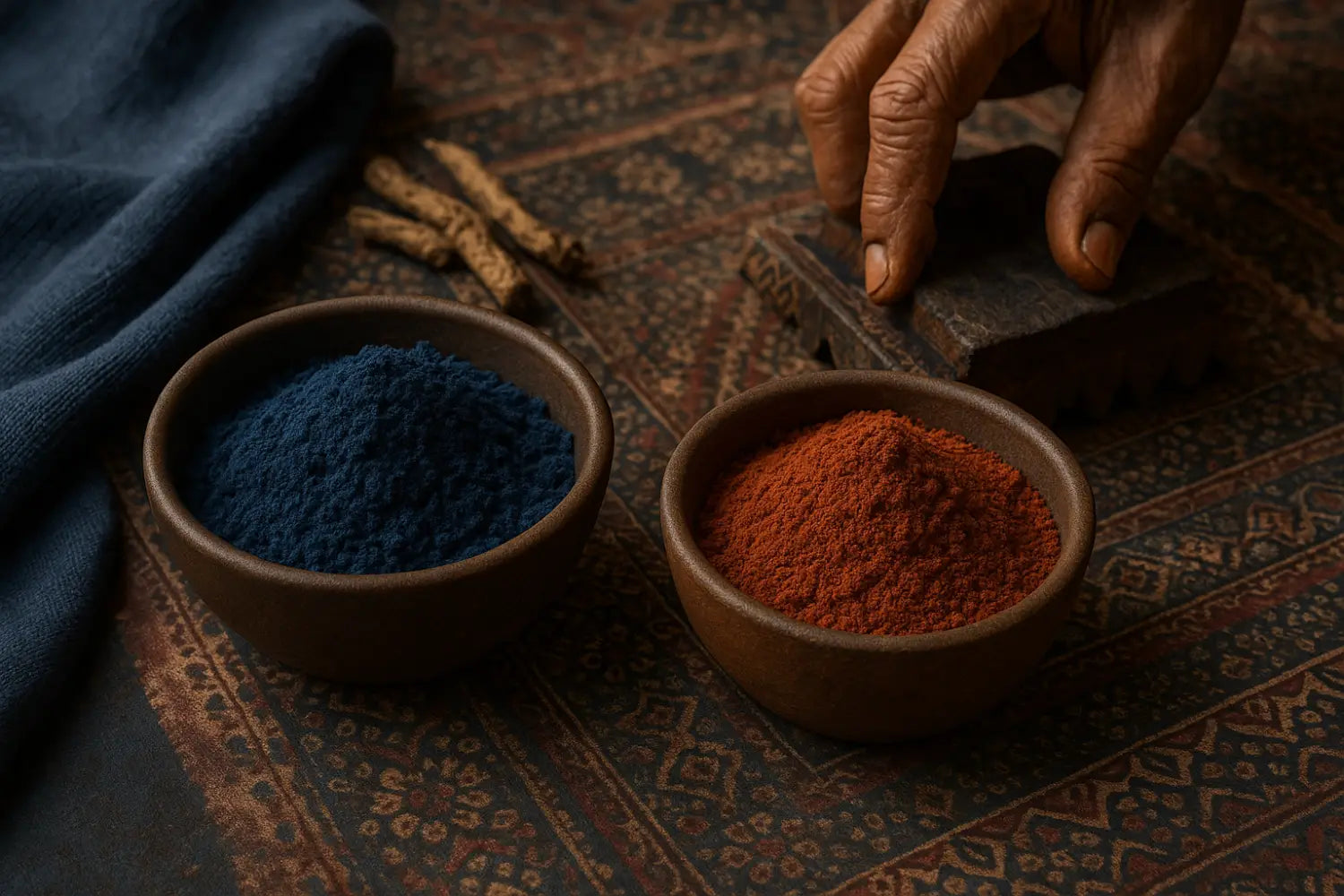
Ajrakh origin is primarily seen in only a few places in the world—mainly Sindh in Pakistan, Kutch in Gujarat, and Barmer in Rajasthan, India. It is suggested that the name "Ajrakh" comes from the Arabic word Azrak, meaning blue.
The Khatri community of dyers and printers has been conceptualising Ajrakh craft for hundreds of years, and it is recognised as their most complex textile art.
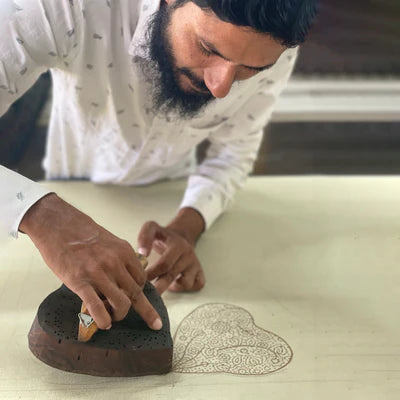
Ajrakh, meaning boldly stands out for its geometric repeating patterns with carefully created borders and centres. These symmetrical original Ajrakh prints contain natural red and black dyes on a deep indigo blue background.
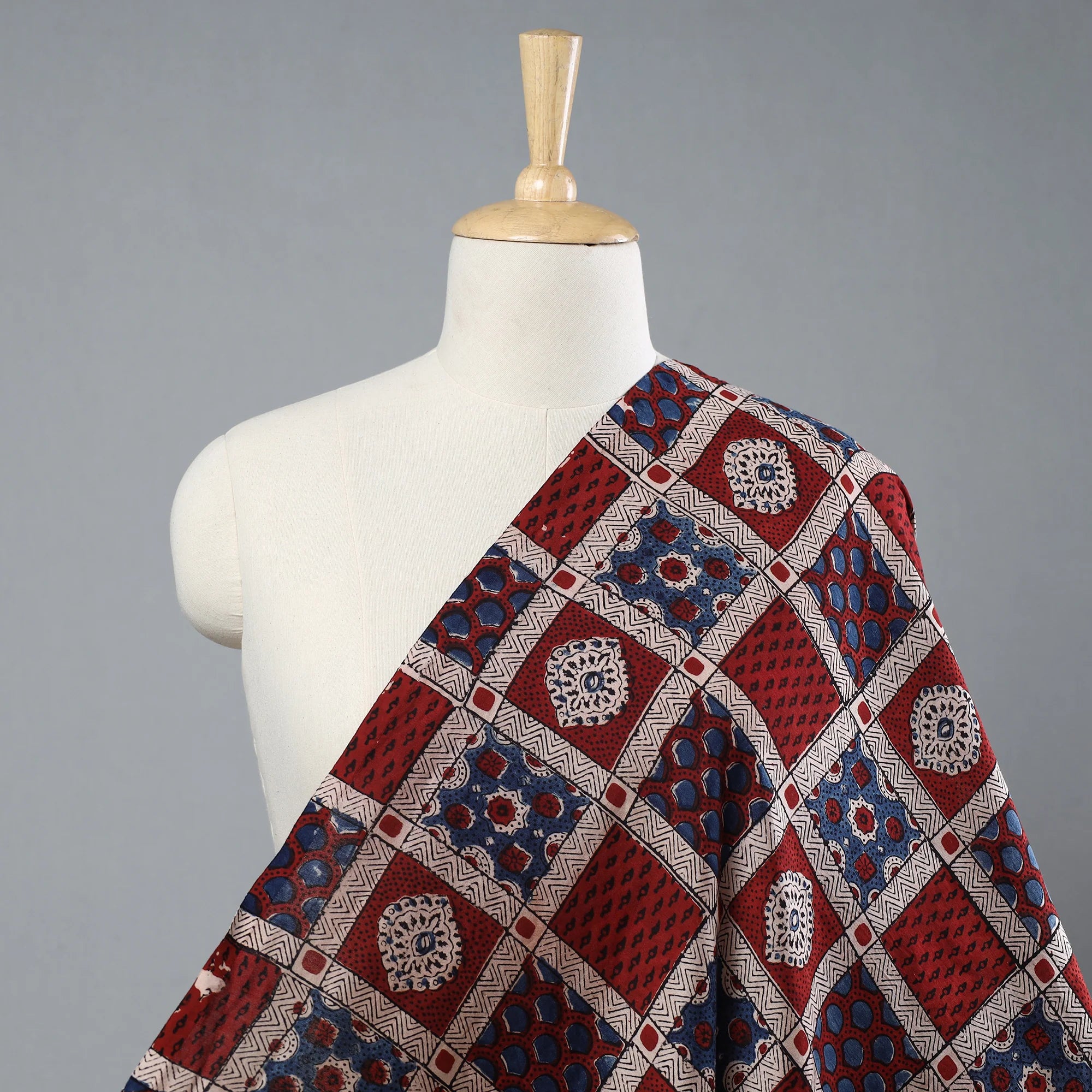
Ajrak Kutch has traditionally been worn by men of the Muslim Maldari community in the remote Banni region of Kutch, and similarly Ajrakh prints are fascinating to some musician communities in western Rajasthan like Langhas, Mangnyars.
Shop the pure Ajrakh dress material online from iTokri.
The Ajrakh Process: Step-by-Step
Skilful processes give birth to the soul of Ajrakh motifs. When it comes to the Ajrakh block printing technique, it is not only winning hearts in India but also across the world. Curious how those beautiful Ajrakh prints are created? Let’s take you behind the Ajrakh printing process.
1. Washing
● The pure Ajrakh fabric is first thoroughly washed to remove starch, dust, and impurities.
● This ensures the Ajrakh material is ready to absorb natural dyes evenly for the next steps.
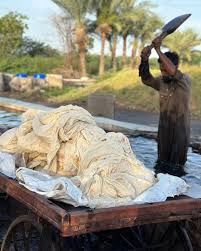
Image Credit:- Instagram
2. Mordanting
● The Ajrakh material is treated with a solution (often made from harda, or myrobalan) to prepare it for dyeing.
● Mordants help fix the dyes into the handmade fabric, which makes the colours more vibrant and long-lasting.
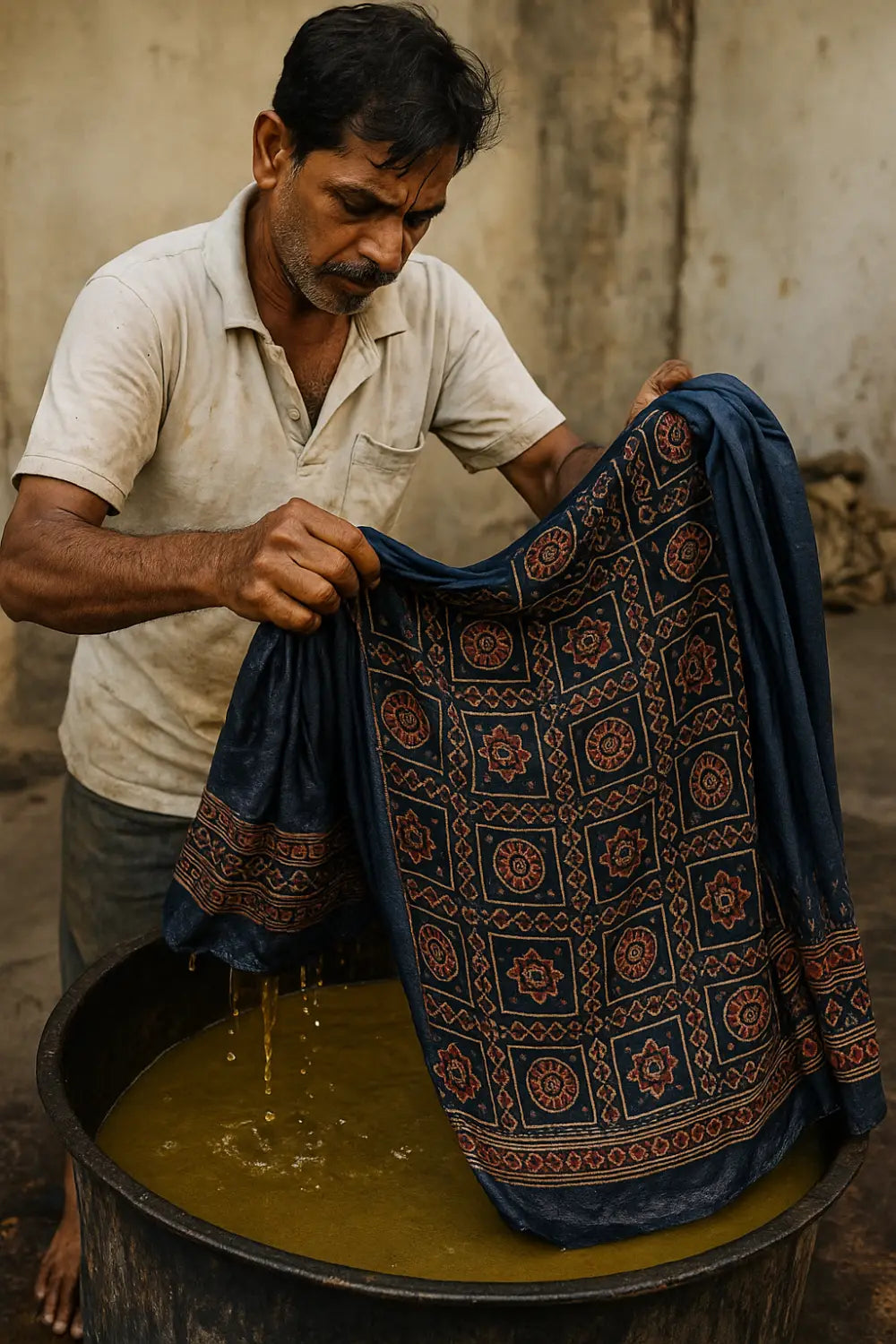
3. Resist Printing
● Using intricately carved wooden Ajrakh blocks, artisans apply a resist paste to specific areas of the fabric.
● This paste limits the dye from reaching those areas and creates a detailed pattern when the cloth is dyed.
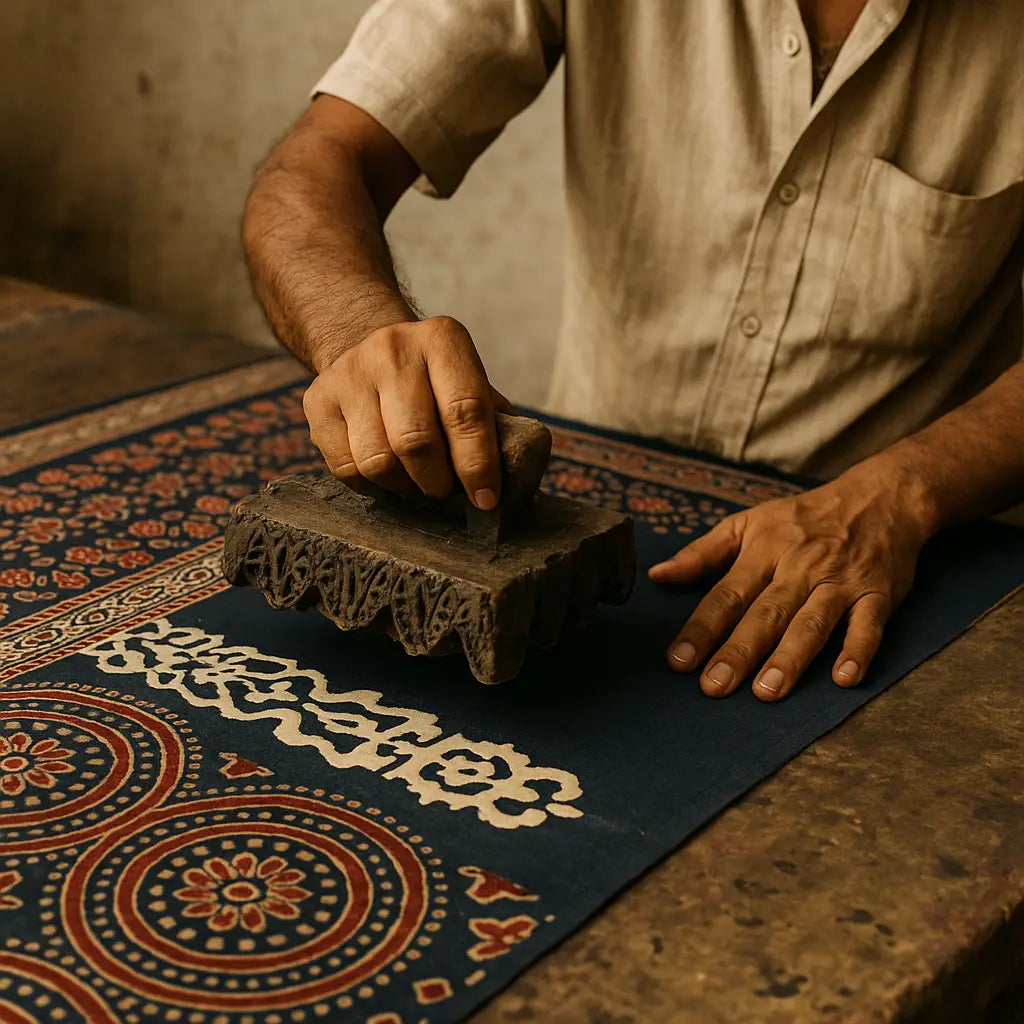
4. Indigo Dyeing
● The fabric is dipped into natural indigo vats, one of the most iconic Ajrakh colours.
● The blue hues develop slowly as the fabric reacts with air after each dip.
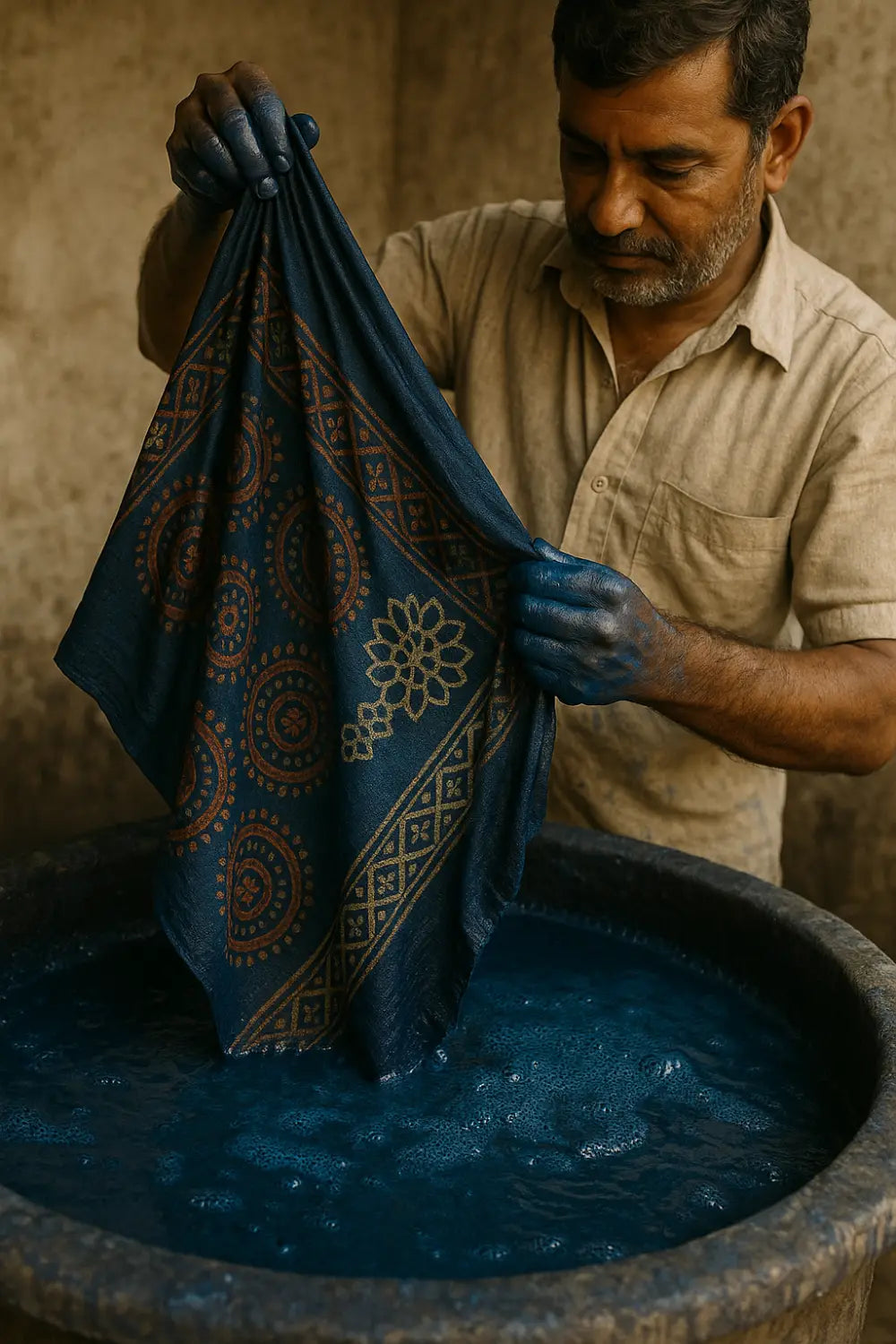
5. Sun Drying & Repeating
● After dyeing, the cloth is sun-dried to set the colours.
● Many steps—printing, dyeing, drying—are repeated several times to layer colours and deepen Ajrakh motifs.
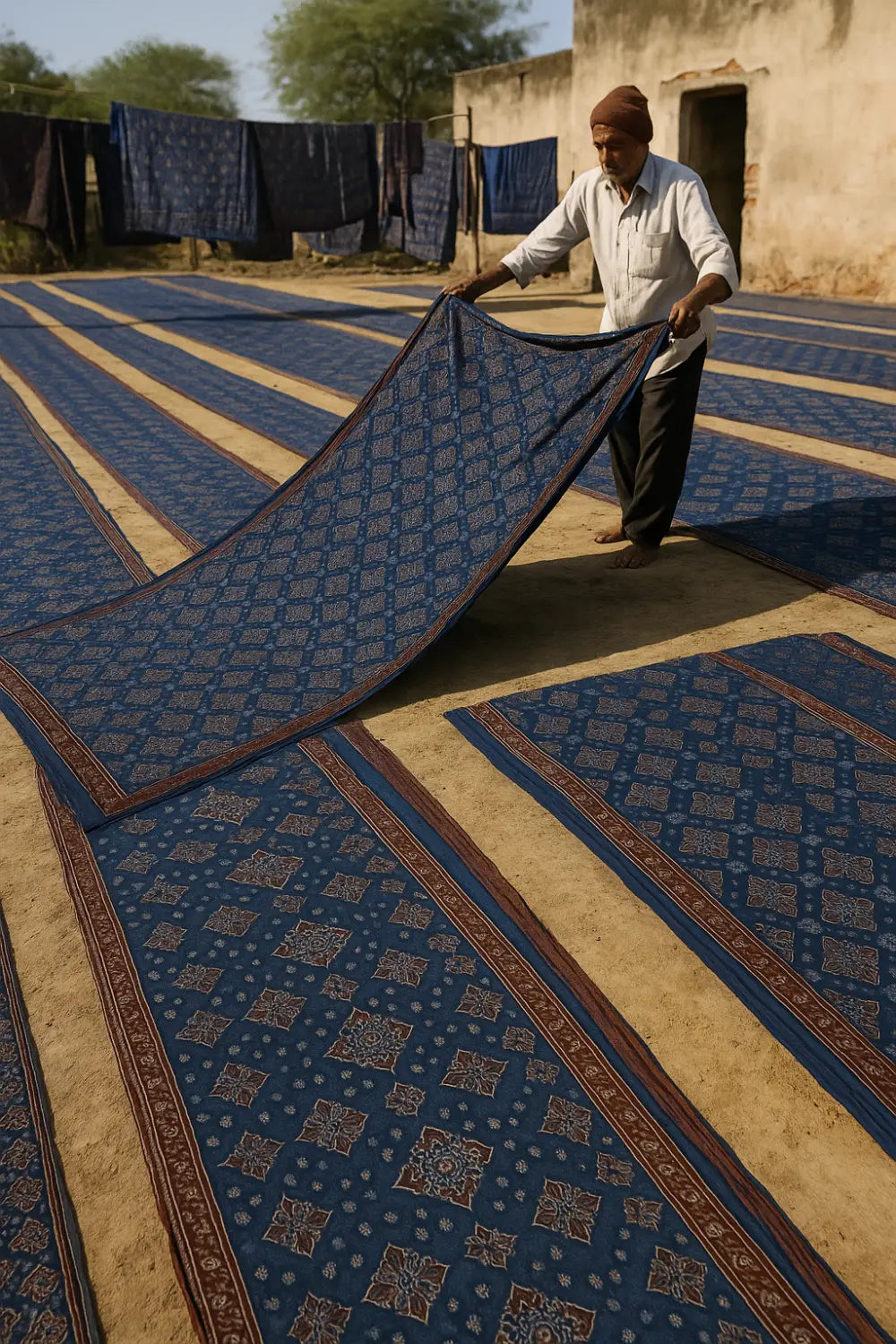
6. The Role of Natural Dyes
● The Ajrakh block printing method uses only natural dyes like indigo (blue), madder (red), and harda (yellow base).
● These dyes are eco-friendly, skin-safe, and give a unique richness that synthetic colours can’t match.
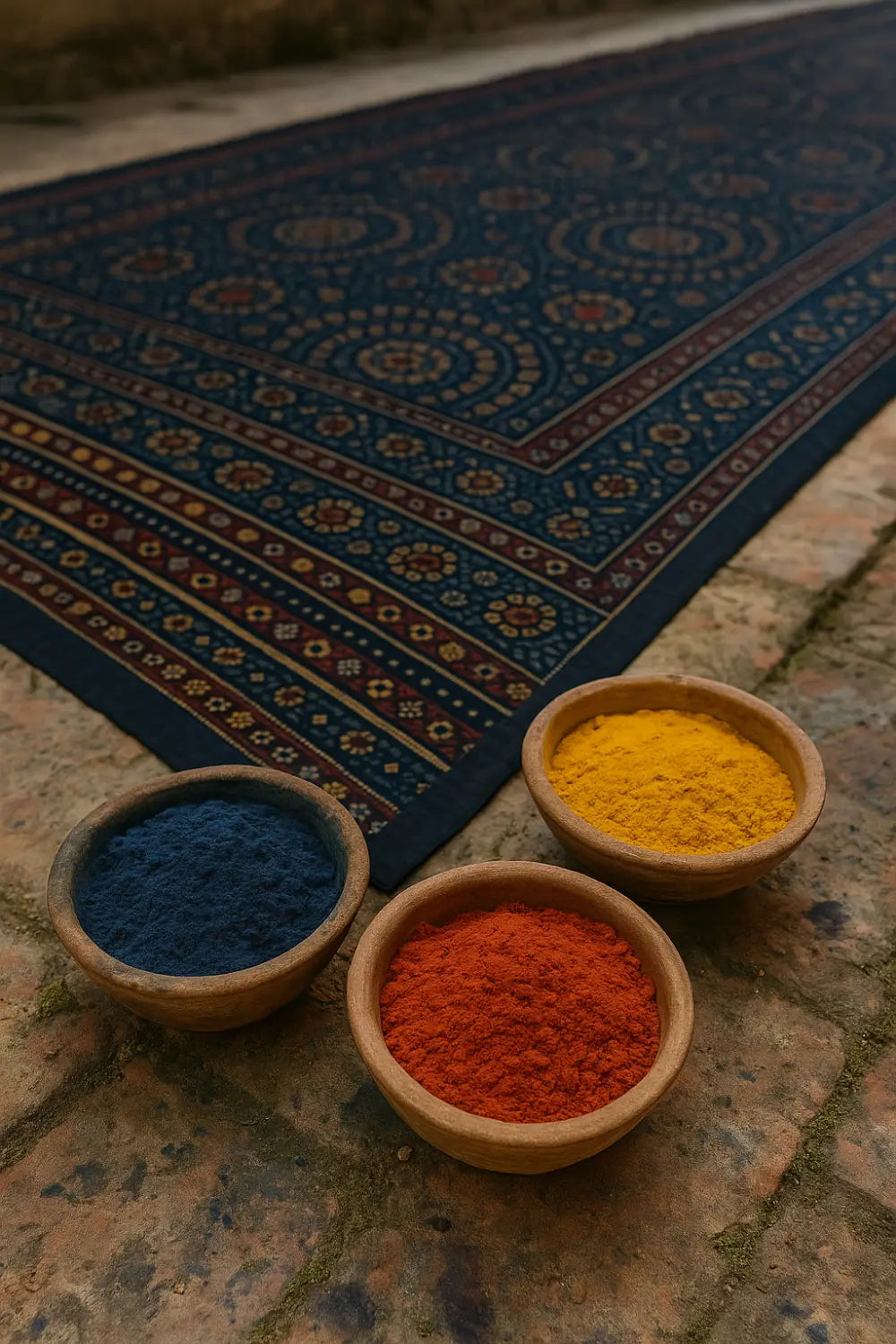
Explore our wide, vibrant range of pure Ajrakh fabric online.
The Cultural and Spiritual Significance of AjrakhAjrakh prints may hang in a closet today, but it began in sacred traditions, desert villages, and music-filled gatherings. Ajrakh craft isn’t just worn—it’s lived. Learn about the cultural and spiritual significance of the Ajrakh print origin in India.
1. Rooted in Sufi Philosophy
Ajrakh motifs are deeply connected to Sufism. The use of precise, repeating geometric Ajrakh blocks symbolises the infinite nature of the universe and the divine. Ajrakh print motifs and symmetry reflect a search for harmony and spiritual balance, which are the key elements of Sufi belief.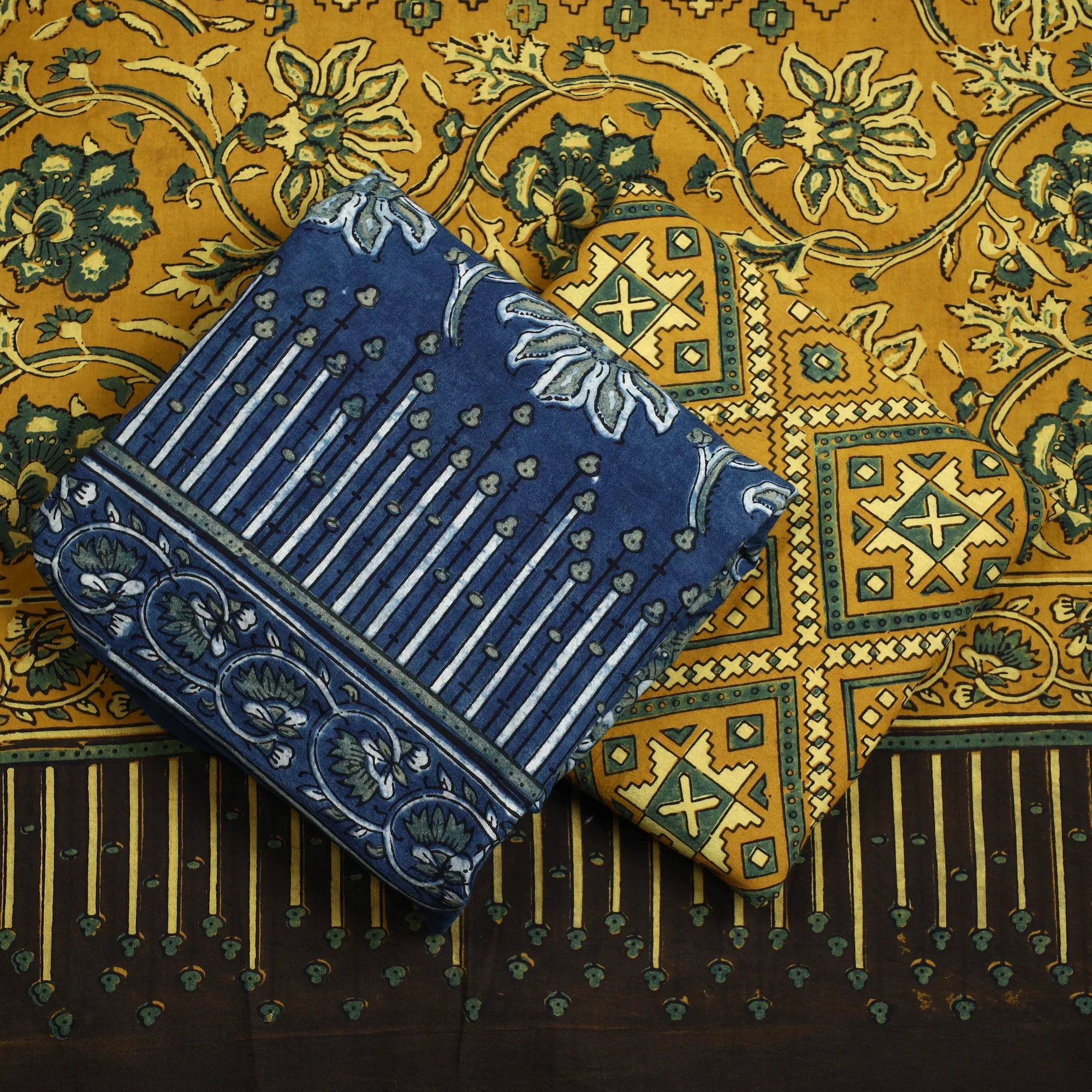
2. Worn by Traditional Communities
Ajrak art has been an essential part of the identity of Muslim Khatri dyers, the primary community responsible for preserving this craft.
It’s also traditionally worn by Maldhari pastoralists in Kutch and musician communities like the Langhas and Manganiyars in Rajasthan.
For them, it’s cultural pride that is passed down through generations.
3. Part of Rituals and Daily Life
Ajrakh print is used in everyday wear, but it also holds a sacred place in rituals, weddings, and religious events. Whether draped as a turban, shawl, or dupatta for women, Ajrakh craft is highly respected and loved by many across the globe. The Ajrakh Gujrat is often considered a symbol of blessing, pride, and protection.
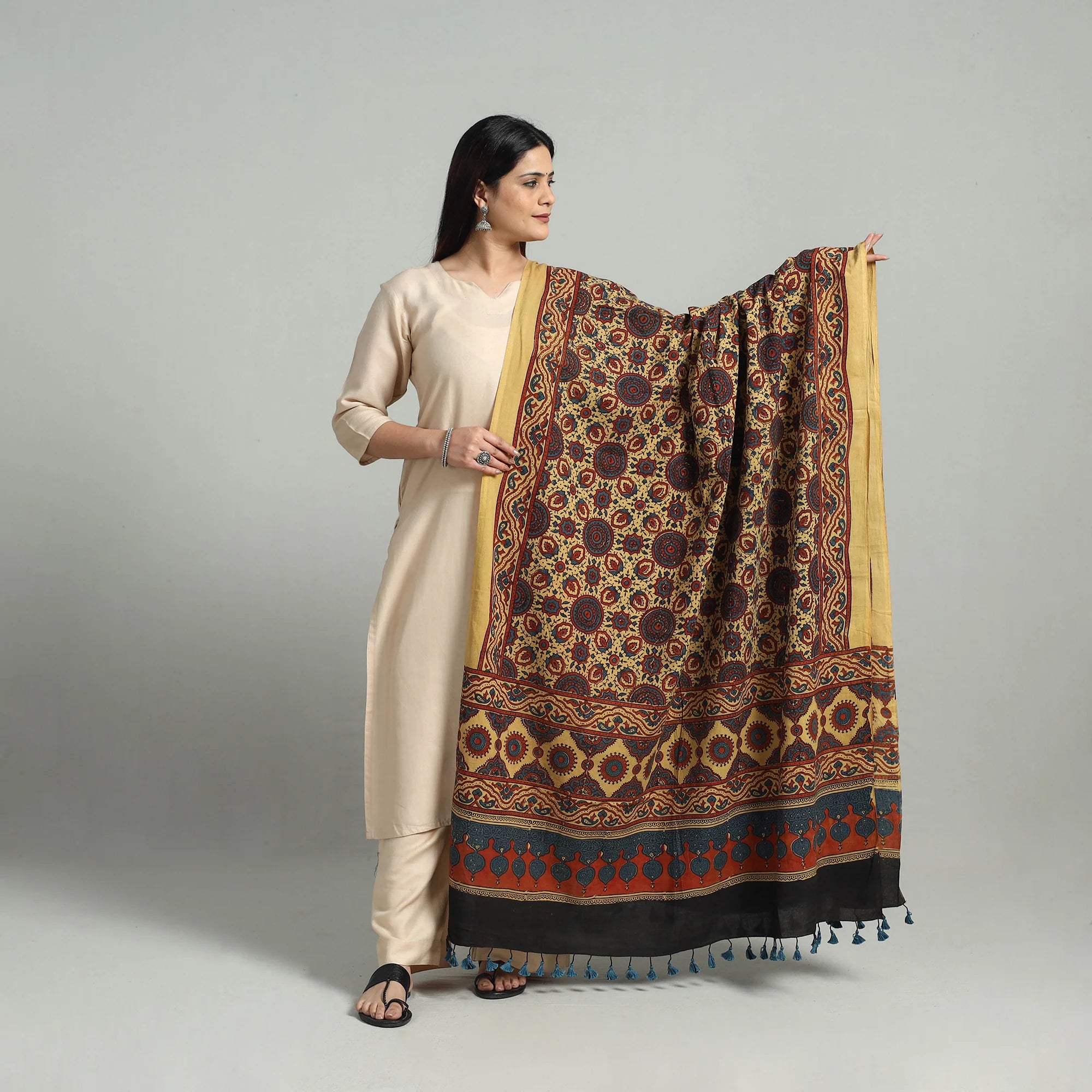
Ajrakh in the Modern World: From Artisan Villages to Global Fashion
Once dyed in the dusty courtyards of Kutch, Ajrakh craft now drapes itself across global runways, which are still handmade, still powerful, and seen through a new lens. Here’s how Ajrakh craft, a slow luxury, is making its way from artisan villages to the global fashion spotlight:
ASPECT |
DETAILS |
|
Revival Through Slow Fashion |
Ajrakh block printing has gained much-deserved attention through the slow fashion approach and sustainability, which has put focus on Indian handicrafts online and natural dyeing techniques. |
|
Contemporary Designs |
Stylists are embracing Ajrakh prints into modern designs such as women’s kurtas, dupattas, sarees, and accessories. |
|
Global Recognition |
Ajrakh's intricate patterns and eco-friendly production have attracted international fashion enthusiasts. This has paved the way for wider recognition in markets around the world. |
|
Artisanal Empowerment |
The demand for pure Ajrakh fabric has provided economic opportunities for artisans in regions like Kutch and Barmer, which also helps to preserve this ancient craft. |
|
Fusion Wear |
Fusion fashion is bringing Ajrakh print motifs together with Western looks and creating styles that appeal to many. |
iTokri’s Role: Preserving, Promoting & Empowering
● iTokri is here to bridge the gap between tradition and today! As much as we cherish the Ajrakh craft, we also make sure that the artisans behind it are seen, heard, and fairly supported.
● We proudly partner directly with the skilled craftspeople in Kutch and Barmer.
● Our mission goes beyond just selling beautiful Ajrakh products. We want to share the rich culture and stories behind each piece with our iTokri Parivaar – with all those who love us.
● Through artisan spotlights and behind-the-scenes glimpses, we bring their world closer to yours.
● By choosing Ajrakh craft from iTokri, you are not only supporting the timeless art with also the livelihoods of communities dedicated to preserving this slow luxury.
So, come along with us on this journey as together we can preserve India’s rich tradition and support the hands that create it.
Here’s a voice behind our Ajrakh craft. Hear it from the master himself –
"Every Ajrakh print I make carries a piece of my family’s history. When iTokri shares my work with the world, it feels like my story is being told with respect and care. This helps me keep our tradition alive and support my family with pride."
— Bhavesh, Ajrakh Artisan, Kutch
How You Can Support the Ajrakh Tradition
Ajrakh ki khoobusrat duniya mein aap sabhi ka swagat hai! iTokri is more than glad to welcome you all, because we believe you are chosen by the ‘prakriti’ itself – or ye hai Ajrakh ki kahani mein apka role:
1. Shop Consciously
-
When you buy Ajrakh craft, look for genuine, handmade pieces like ours at iTokri that are made by skilled artisans.
-
Avoid mass-produced imitations—your thoughtful choice can help to keep this unique Ajrak art alive. Support the families who rely on this craft for their livelihood.
2. Care With Love
-
Ajrakh fabrics are made with natural dyes and delicate processes, so they need a little extra attention.
-
Wash them gently by hand, avoid harsh chemicals, and air dry them away from direct sunlight.
With simple care, your Ajrakh prints will stay bright and beautiful for years to come.
3. Spread the Story
-
Every Ajrakh print carries a rich history and cultural meaning. When you wear or gift Ajrakh craft from iTokri, you are consciously spreading its story with your friends and family.
-
Talking about the artisans, their techniques, and the tradition behind the fabric helps more people appreciate and value this incredible craft. Take a glimpse of iTokri’s Instagram for client stories and the fun behind the scenes sessions.
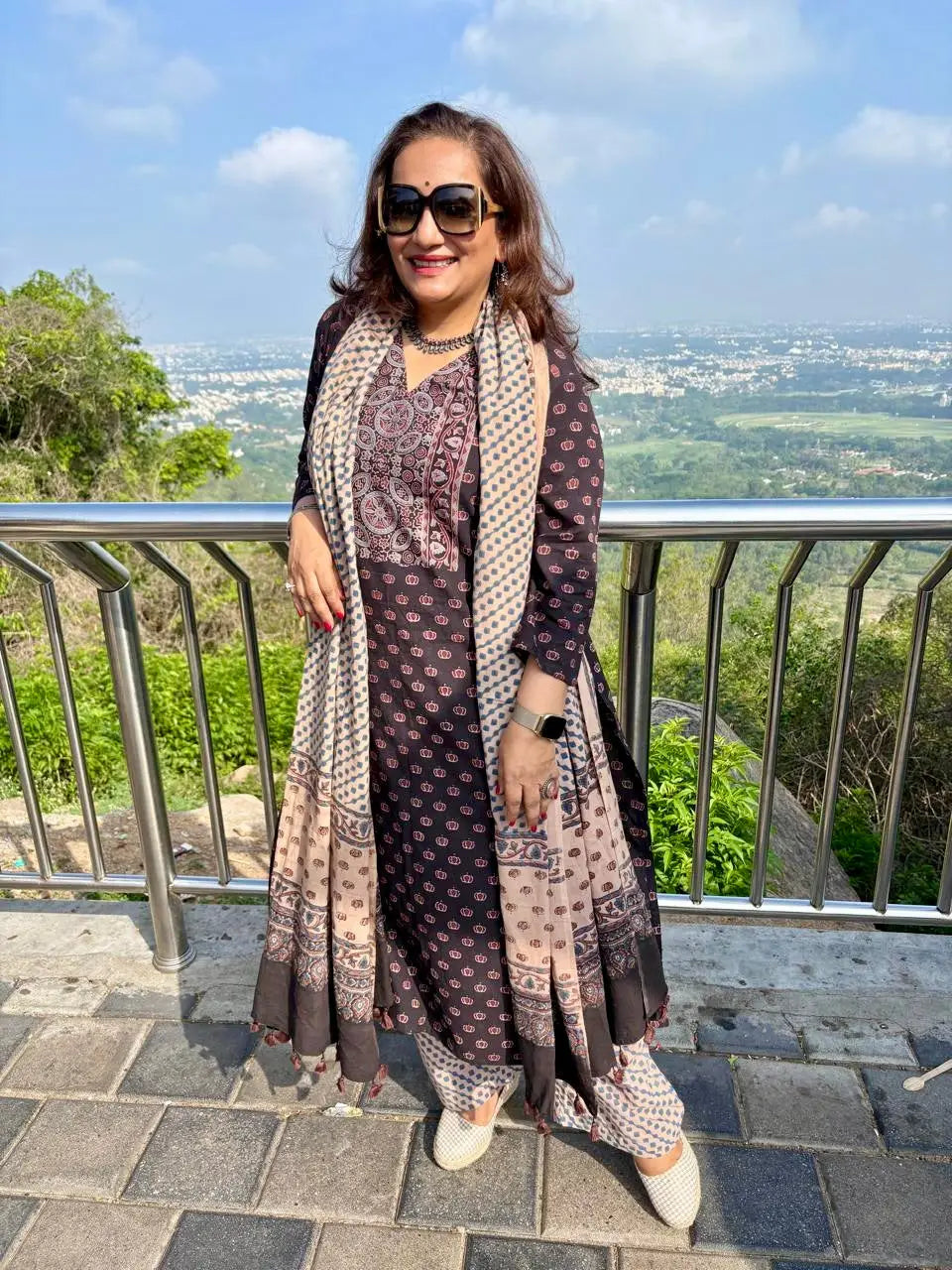
Frequently Asked Questions on Ajrakh Craft
Which state is famous for Ajrakh?
Ajrakh is most famous in Gujarat, especially the Kutch region, and also in Rajasthan’s Barmer district.
What is Ajrakh art?
Ajrak art is a traditional form of hand block printing and natural dyeing, known for its intricate geometric patterns and use of natural colours like indigo and madder.
What is the Ajrakh printing technique?
The Ajrakh printing technique involves multiple steps, including resist printing, dyeing with natural colours, and repeated washing and drying to create detailed, symmetrical motifs.
What are the 3 types of Ajrakh?
Three common types of Ajrakh are Sindhi Ajrakh (from Pakistan), Kutchi Ajrakh (Gujarat), and Barmeri Ajrakh (Rajasthan).
Our Popular Reads –
The Art of Handmade Fashion - Custom Stitched Outfits for Personal Style l iTokri आई.टोकरी
The Art of Slow Fashion: Handmade vs. Mass-Produced Outfits
Indian Crafts that Gota Geographical Indication(GI) Tag in Recent Years
Choosing Fabrics - How to Find the Perfect Match for Your Style l iTokri आई.टोकरी
Citations –
 Verified Purchase
Verified Purchase



















































































































































































































Leave a comment (all fields required)